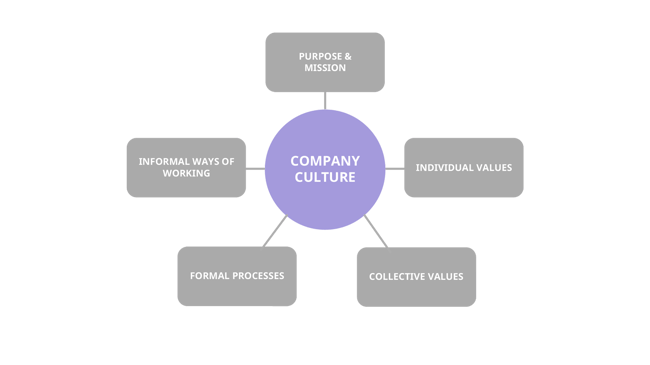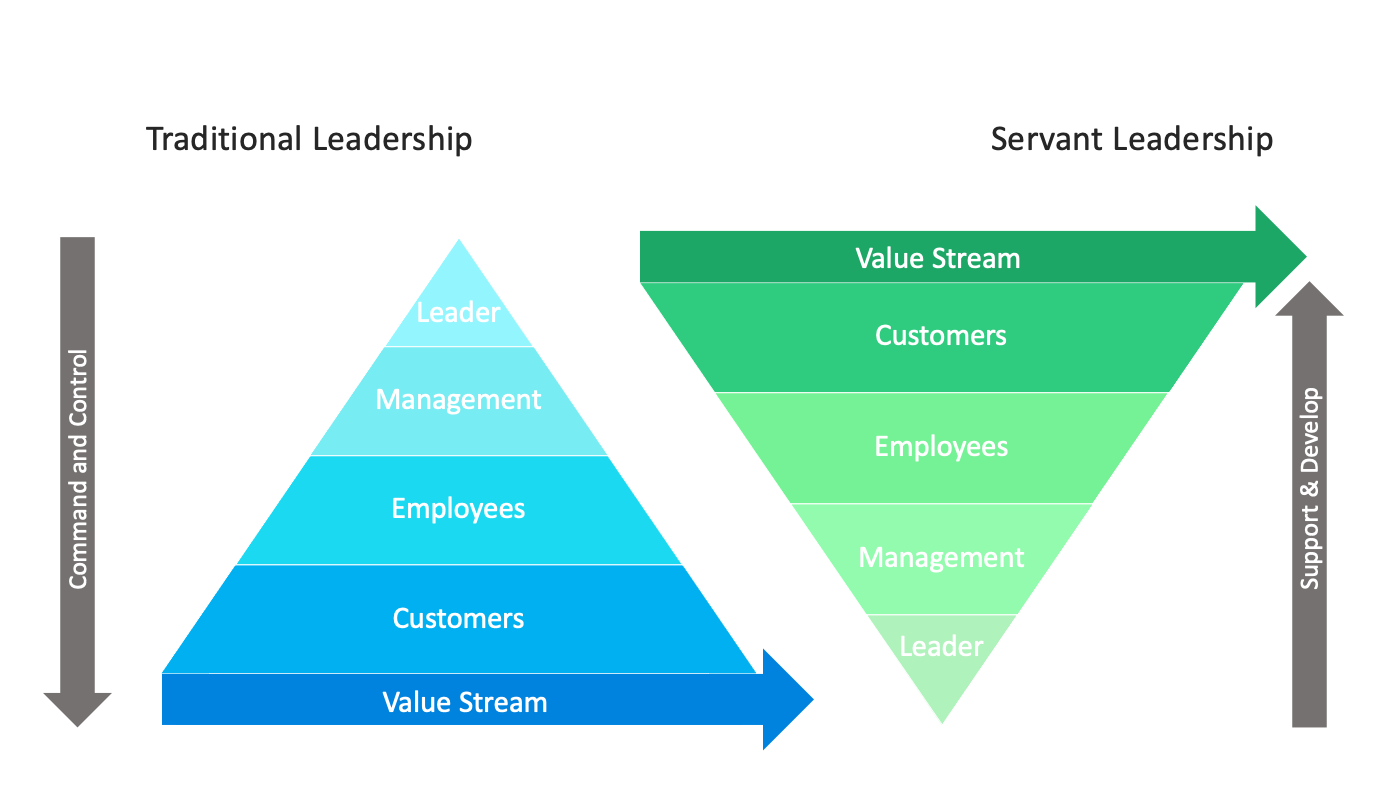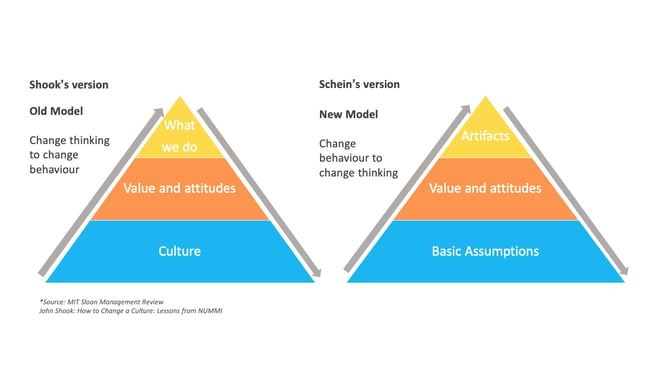How to Create and Sustain a Continuous Improvement Culture
Company cultures can be very different from one organization to the next and there’s nothing wrong with that. Having shared values, goals and beliefs drives organizations forward, but what truly contributes to their success is a healthy organizational culture.
A healthy company culture is the cornerstone of successful companies. So, what kind of culture should you develop in your organization for long term performance and success?
Today we’re making the case for Continuous Improvement Culture (CIC). What is it, why more companies should consider it and what does it take to implement it successfully? Let’s dive deeper into the elements that make continuous improvement culture a desirable choice.

Table of contents
What is company or organizational culture?
Generally speaking, organizational culture is the shared set of values and beliefs that make the unique social and psychological environment of an organization. It’s what dictates “how things are done” in a company.
Culture in the workplace is not stagnant and for an organization to stay relevant, its culture has to evolve and adapt. This is also why it shouldn’t be seen as a set of strict rules or forced behaviours, but as a mindset that guides everyone’s everyday work.
According to McKinsey, a healthy culture is reflected in the ability of an organization to function effectively and be highly performant for a longer period of time. Their research showed the Continuous Improvement approach to be one of the major signs of a healthy organizational culture. But why is that and how does it look like in practice?
What is a continuous improvement culture (CIC)?
CIC refers to the system of values shared by an organization that promotes the belief that whatever is good today, might not be good enough tomorrow. In broader terms, it’s a shift in the way employees think about their work, a mindset that makes people eager to become better every day, through incremental improvements.
A Continuous improvement culture is just one of the many approaches that can enhance your organizational culture. Your company can be focused on collaboration, customers, or efficiency and performance. To these you can also add continuous improvement to drive your overall culture.
When developed right, a Continuous Improvement culture naturally instils in people the desire to become better and strive for excellence. It’s rarely the case that we can simply change how people think or what they believe.
In theory it sounds simple. In practice, however, committing to continuous improvement is serious work so let’s see why it’s worth the trouble and what it takes to advance it in your organization.
Why is a continuous improvement culture so important for any organization?
In the McKinsey Organizational Health Index, CIC is one of the key ingredients for a healthy organizational culture. Their research shows that the most common type of culture in high performing companies is the continuous improvement one. This Index also proved that in almost 2000 companies, organizational health is closely linked to performance. In fact, the healthiest companies are more than twice as likely to outperform their peers.
Cultural change doesn’t happen overnight, but it’s one of those things you won’t regret you’ve put the effort and resources into. Why is that? We listed four key benefits that come with the continuous improvement approach.

1. Operational Excellence
Unfortunately, excellence is more of an exception than the rule in many organizations. Striving to perfection in your daily work can become exhausting, especially if it’s not a strategic, constant and widespread effort.
As a more abstract and non-tangible concept, operational excellence is the alignment between continuous improvement, innovation, business strategy and the corporate culture.
A Continuous Improvement Culture plays such an important role in achieving operational excellence because once it is absorbed and integrated into an organization, it becomes its DNA.
In a sense, operational excellence it’s like a two-way street. Continuous improvement culture contributes to operational excellence and in return, operational excellence reinforces the mentality ingrained in the culture that empowers the workforce to continuously improve.
2. Companies with a strong CI culture are more innovative
There is no secret that continuous improvement is one of the building blocks of incremental and sustaining innovation.
Continuous Improvement as a culture is embedded in the “Toyota Way” and since the introduction of the Toyota Creative Idea and Suggestion System (TCISS) in 1951, the company has constantly empowered employees to participate in improving on their products. At the time, they were not the first to value creative ideas from their workforce, but they were the first to make this system an ongoing, widespread practice.
Just having new ideas is not enough to make innovation happen. What moves things forward is how those ideas are prioritized, managed, and implemented. At Toyota, up to 90% of ideas saw the daylight. 70 years and 40 million ideas later, they proved that a culture that empowers employees to continuously improve has a great impact on how innovative a company can become.
What moves things forward is how those ideas are prioritized, managed, and implemented.
3. Employee retention, engagement and turnover
It’s often said that an organization is only as good as its people. This is because they come with their unique mix of skills, knowledge and backgrounds which add great economic value. Employees’ motivation and commitment has become a major concern for organizations. For example, in the US today, 71% of executives admit that employee engagement is essential to their company’s success, and understandably since low engagement costs companies $400-500 bln/year.
As younger generations have different incentives and expectations from their workplace, companies fight for the best talent. Their weapon of choice? The corporate culture. Why? Because employees are nowadays paying attention not only to perks and benefits, but also to the culture of the company they choose to work for.
When things are going south and engagement rate is low or turnover rate high, ask yourself (and then ask them too): Do they have development opportunities? Can they grow as professionals and individuals? Do they relate with the core values of the company? Is their work meaningful enough, appreciated and recognized? Does it give a sense of accomplishment and purpose?
If you manage to address these concerns, you are on the right track. A culture of continuous improvement answers to some of these concerns as employees are given the power to improve, and the freedom to grow and learn.
4. Competitive advantage
To stop improving, means to stop evolving. In today’s highly competitive markets no one can afford to fall behind. The competitive advantage starts growing when employees understand and are directly involved in the effort needed to constantly develop.
Cultural change gives employees power and while a continuous improvement culture is led from the top-down, it is implemented form the bottom-up. It’s only when management puts responsibility in the hands of front-line workers, that they can take ownership and become accountable.
PQ Corporation exemplifies the power of CI culture and how this became the driver factor for quality improvement and ultimately gave them a competitive advantage on the market. They made sure that management is committed in leading the efforts of cultural change and that their employees recognize and adhere to the principles of these practices.
Employees had the power to initiate and drive improvement projects because teams were given $50k to spend on projects that would improve their processes. The ideas generated and implemented and the fact that employees were given the power to make decisions, saved the company millions of dollars.
The elements of a strong continuous improvement culture
1. Great leadership, specifically lean leadership
Leaders should understand that culture is not just a corporate thing HR has to advocate for. Good leaders act both as role models, and as coaches. They have to steer the ship and make sure the organization is not dragged in the wrong direction by the prevailing winds.
Good leaders act both as role models, and as coaches. They have to steer the ship and make sure the organization is not dragged in the wrong direction by the prevailing winds.
Maybe the most appropriate type of leader who can successfully bring about the culture of continuous improvement is the lean leader. This is the type of leader who can raise new leaders that embrace and transfer the culture of continuous improvement. Lean leaders are open to experimentation, are not afraid to distribute power and give ownership.
Lean leadership is built around the principles of continuous improvement and is guided by processes we’ve previously talked about, like PDCA and Kaizen.
2. Communication
We tend to forget that communication is not as much about talking as it is about active listening and understanding. When we make the effort to listen to understand, not just to answer, communication is more successful.
Communication is a key element for the CI culture. First of all, conveying the right message early on will help employees align with the corporate culture. Being transparent in all areas of the organization also creates a more welcoming and trusting environment which in return makes everyone in the company feel they matter. 
Secondly, communication also refers to knowledge exchange. How can anyone improve without knowing about best practices across, up and down the organization? Organizations should always consider using communication platforms that can foster strong team-based collaboration and exchange of ideas.
3. Ownership and trust
Remember that building ownership and trust will unleash more energy in your organization. A culture of continuous improvement will work if employees can balance their freedom to create and develop new ideas with the discipline of accountability and ownership.
Once again, it’s the managers’ role to empower and inspire people to take risks without fearing judgment or penalty. For this to happen, they also need to feel they are trusted. The reverse should also apply, employees should be able to trust the actions of your company.
Here is where we come back to our previous point, communication and transparency as key factors in building trust.
4. Learning culture
We often see companies providing short term training programs that don’t have continuity. This happens because companies usually overlook the importance of long-term growth orientation that favours learning.
Elizabeth Young McNally, global leader at McKinsey Academy has recently talked about building a culture of learning that drives business forward. She is making an interesting point, that “you first have to learn to follow in order to learn to lead.” This is what makes good leaders and also accountable employees.
Deciding on a continuous improvement approach also implies that you create an environment where continuous learning is constantly encouraged. Leaders have to set the tone by encouraging learning. There might be some reluctancy in learning or developing new skills after a certain age, but the good news is that learning to learn is also a skill we can build. We just need the tools and the context for it.
How to start building a continuous improvement culture and maintain it
Even though we talk about organizational culture as a mindset first and actions second, the truth is that both mindsets and behaviours are difficult to change. So, while it won’t happen overnight, that doesn’t mean that we couldn’t make that change happen.
Behavioural scientists and neuroscientists say that we humans are predictably irrational. These insights are already being used in companies for a variety of different purposes, including cultural change. We might not be able to easily change how people think, but we can influence their behaviour without restricting them.
That’s of course easier said than done, but we’ve listed five practical steps that can help you make progress on the path towards a continuous improvement culture.
1. Create the right atmosphere
Creating a safe space where everyone feels welcomed and valued contributes to innovation and enables accountability. The emphasis should be on emotional safety and it can be created when employees are valued as individuals and listened.
How can you then achieve this? Involve everyone in meetings, always leave your door open for conversations, give feedback and let them know why you value them. Offer learning and development opportunities by allocating time, funding, or just encouragement to follow their personal and professional goals.
Let’s take the Amazon example. In 2012 they launched the Career Choice program which provided hourly employees access to educational benefits. The program offers tuition, fees and textbooks reimbursement for participants interested in earning a certificate or degree. The $700 million they vouched to invest in its employees is helping the company retain 100k team members
2. Implement continuous improvement processes
We’ve expanded on the topic of continuous improvement processes on our blog before, and this is an important step in supporting a continuous improvement culture. Processes help you identify new opportunities and add value to your services or products over time.
Choosing the processes that fit your organization best can be a complex undertaking, but if in doubt, you can consider Kaizen as a first step. Kaizen is ultimately about building a culture where continuous improvement becomes second nature for all employees, so it’s a natural fit.
Another popular approach that goes hand in hand with a continuous improvement culture is lean management, a method of managing and organizing work with the aim of improving the company’s performance, especially its quality and profitability.
Lean thinking as a management philosophy is useful for improving process speed and quality by eliminating anything unnecessary that doesn’t bring value.
3. Lead the way: show, don’t tell
We all know that actions speak louder than words. So, leaders act accordingly by becoming an example for their teams. A very interesting concept in leadership, that comes from the 70s and has been increasingly studied in recent years is the “servant leader”. 
A servant leader is one that puts the employees first, he serves them by focusing on the people directly below him, rather than on the company as a whole. He or she does this by ensuring that employees have the opportunity to grow professionally, improve their knowledge and have autonomy.
This style of leadership is clearly opposing the traditional approach to leadership where authority prevails. It has become highly popular even among the top-ranking companies, like Google whose friendly policies increased productivity and revenue.
How can you achieve this? Be empathic towards your employees’ issues, be a good listener, motivate and encourage people. Stimulate dialogue across all departments and celebrate success, even if it’s small. Lead by example by acting on suggestions and encourage others to do the same.
A practical example of putting this into practice is to use a tool for continuous improvement and ideation. This can help you keep track and implement new ideas which will make everyone feel included.
4. HR as a strategic partner
HR departments play a major role in setting the cultural tone and promoting it. Among their key roles in the company, they have to attract, develop and retain talent. This is why they need to be your strategic partner in building a strong continuous improvement culture.
It might happen that HR takes this role naturally, but if this is not the case, top management should ask for their support. How to do that?
- Hiring practices
The behavioural norms they use in hiring new people have to be consistent with the company’s values. The cultural fit in the traditional, simpler sense (cultural background, education etc.) will likely not lead to optimal results. People might get along well, but that doesn’t mean that such employees would add value to the whole. When making hiring decisions, HR should rather pay attention on diversity of thought while maintaining cultural fit around key values like honesty, integrity, learning culture, curiosity and openness. - Onboarding sets the tone for how new hires and is key for introducing them to the culture in the company, and in setting expectations for their behaviour.
This is why it’s important to have a culture-based onboarding checklist that includes training around the culture in the company, facilitating meetings with new colleagues and providing resources that explain the vision, values and mission of the organization.
5. Remove barriers
The types of barriers a company is facing can differ from one organization to the next. It’s important to pay attention to things that might be counterintuitive for some. 
Going back to the issue of changing mindsets, this can be a huge barrier for organizations. If leaders have a fixed mindset, for example, is hard to achieve a culture of improvement. HBR describes the different types of mindsets that influence the actions of leaders.
Social science shows that mindsets can be developed. Once you understand and identify the right mindsets that leaders should develop, you can create a leadership training program to unlock the effective ones in your organization.
Microsoft, for example, leveraged the power of mindset development when Satya Nadella took over as the new CEO in 2001. In his book, “Hit Refresh”, he talks about how Microsoft grew thanks to the growth mindset.
Another barrier organizations might encounter is the “knowledge is power” mantra. In some places it guides everyone’s work either implicitly or explicitly. While this approach does have its benefits, it can also backfire.
If expert knowledge is praised in the detriment of less experienced employees, then it quickly becomes a barrier. Should expert knowledge be deemed more important than anything else, it can lead to all essential information and decision-making being kept in the hands of just a few people.
These are the cases where management has the “we know best” attitude and front-line workers’ or junior employees’ knowledge is discredited. This removes most opportunities for improvement and actual innovation.
In these cases, it also happens that people hold on to that knowledge to bolster their own position, in which case it’s not disseminated widely, but just used for getting someone’s way. So, pay attention to these subtle signs that might harm your organization’s improvement culture.
You could create a mentorship program at multiple levels to enable the dissemination of expertise. As senior leaders, make sure you dedicate time to interact more with junior team members, and explain why things are as they are. There are other important pitfalls that can act as barriers, and we dedicated a special section to these, below.
Continuous improvement culture done right
1. St. Mary’s General Hospital
There are multiple examples from the healthcare sector where a culture of continuous improvement has helped hospitals reduce risks and improve patients’ safety and care.
One of these cases is St. Mary’s General Hospital from Canada, ranked as one of the safest hospitals in the country. Before ranking so high, they had issues with an increased number of patient falls. CEO Don Shilton at the time set to change this through a culture that focused on process improvement and engaged frontline workers in identifying and solving problems. This alone lead to a drop of 80% in the number of patient falls.
He also applied Gemba and Kaizen practices to ensure the long-term continuity of these practices. Top management went to the floors, asked questions and tried to get answers that would help them in their strategic decisions. Once the CEO retired, they made sure these practices continued by recruiting replacements who had knowledge and experience with a continuous improvement culture.
2. NUMMI
Even though the NUMMI plant closed in 2010, it is still a great example to learn from. In the 80’s NUMMI was the worst General Motors plant in history. After Toyota joined the venture, it managed to take the plant from GM’s worst to their best in just 12 short months.
This plant had a reputation for having the worst workforce that was seemingly always on strike, and a rate of absenteeism as high as 20%. The solution John Shook had for a cultural change was not to change how people think, but to change how they behave. He identified the actions and behaviours that had to change and then offered training and designed the processes necessary to reinforce those behaviours.
The change came when employees were clearly communicated what their job was, and then received training and tools to perform better. This helped them to identify and point out problems without feeling the pressure of being blamed, which empowered them to focus on solving problems.
Another thing that distinguished the attitude of Toyota workers and what motivated them was the feeling of membership. The company-employee relationship was built on trust and enforced through their internal policies like “laying off as a last resort”. This mutual trust that was built between workers and the company made employees accountable and motivated to take ownership. 
In one year, the results were dramatic. Absenteeism had dropped to 2% and the quality improved dramatically. In his paper, “How to Change a Culture”, John Shook explains how they succeeded in changing the culture in jus one year.
3. Leyland Trucks
They might not be a famous name like Google or Toyota, but this truck manufacturing company in the UK, has got the continuous improvement culture right.
There are various reasons that lead Leyland Trucks to decide on the continuous improvement approach. They wanted to meet customer demands and provide more reliable trucks while increasing their production and sales. In such a competitive market they also aimed for a more efficient production.
Also, the company had to become more efficient in order to protect the jobs of workers in UK. An inefficient workforce could have determined higher management to move the production to countries with lower labour costs.
Their culture evolved over time and it is currently based on the philosophy that they can achieve their business objectives by involving their full workforce.
As one of their strong ambitions, they wanted to increase their market share from 15% to 20%.
This goal consisted of two main elements: continuous improvement and increasing production. In order to achieve this, they’re not just involving everyone in the continuous improvement process, but they also put their values in action by:
- providing training for everyone to help them identify ways in which they can contribute to continuous improvement
- involving everyone in decision making and day-to-day sharing of ideas around team members
- giving responsibility to everyone and encouraging them to make decisions
- organizing team-buildings around Kaizen practices
- allowing and promoting new ideas: they celebrate achievements of individuals and teams every three months
- enabling transparency and trust: they have weekly briefings informing everyone on new developments, issues and successes
Pitfalls to avoid when building a continuous improvement culture
Joakim Ahlstrom described in his book, "How to Succeed with Continuous Improvement", the five most common pitfalls organizations have to deal with when trying to bring about change. Taking a look at these will help you identify what stands in the way of a truly efficient Continuous Improvement Culture and how to avoid them.

1. Low-hanging fruit trap
The use of the low-hanging fruit phrase is pretty common in business. It is used to refer to the things we choose to tackle because they are most obvious, easy and accessible. It’s a natural tendency to go for the low hanging fruits because they give the impression things are moving forward.
The underlying problem in going for the obvious, indisputable options is that those options don't often address the real problems, or the true opportunities. If you consistently go for just the low-hanging fruits, you might feel a false sense of progress, even though you are likely to disregard those problems or opportunities that truly matter in the long-term.
There's still a time and a place for these low-hanging fruits, but often it's better to just climb a bit to get to the best fruits overall.
You can start by encouraging transparency and involvement. Launch a systematic and structured way of tackling ideas and challenges. Use idea challenges as a means to empower and engage everyone in continuous improvement. You can start small, iterate and make continuous ideation and improvement the new norm.
2. Reality illusion
It happens that sometimes we are so sure we know best, that we rush to dismiss other opinions and points of view. We might later realize that we were wrong or that our way was not the only way, but we are afraid to admit it. We can call this the fear of regret because it happens that we would rather deny new uncomfortable information rather than reshape our worldview. According to researchers this type of behaviour is very common.
You can recognize this if you hear statements like “why can’t people just do what they’re told?” or “I wish they would think the way I do”. This kind of thinking betrays a culture where diversity of thought is not valued. We should always take a moment and think before deciding that our solution is optimal. Maybe someone’s perspective brings something new to the table. Shared viewpoints in the workplace are often enriching and can actually provide new opportunities for the organization.
3. Emperor’s new clothes
Have you been in a workplace where people tend to blame others when something goes wrong? It’s the classic scape goat culture where everyone is busy looking good in front of the boss. Unfortunately, the competitive world of business has traditionally been plagued with this fear of losing face which might cost someone a bonus, a promotion or a job.
Just like in our personal lives, losing face is not the most comfortable thing for most of us. This is why organizations need leaders who encourage risk taking or what we call “failure-tolerant leaders”. These are the leaders who overcome such pitfalls by encouraging people to overcome their fear of failure and create a culture of intelligent risk taking.
How to approach this? Encourage people to tell the truth, to be brave and to point out the elephant in the room. Looking good is not the name of the game. Questions like “why we are measuring this”, or “how is this improving our work”, should never be dismissed with answers like “that’s how we’ve always done things here”.
4. Efficiency paradox
Most of us have fallen victims to the hunting culture, when we are afraid to stop and take some time reflect. It usually happens because short-term results are more important than anything else. If it’s a common practice in your workplace it could mean that the organization hasn’t done a great job at prioritizing and communicating the importance of a long-term approach.
We think we can stop when there is nothing more to produce or create, but we know too well that will never happen. By taking a break to reflect and think strategically you win, and the organization wins too.
5. Friendship fallacy: the fear of losing friends
A nice work environment is also created by the human interactions we have each day. So, we should not be surprised that we cherish these connections, and we are trying our best not to ruin them.
The trap here is that it can affect the culture and the organization because we avoid speaking our mind out of fear of losing friends. When people are afraid of confrontation it means that there is not a healthy communication culture in place. Sometimes employees are afraid to hold their colleagues accountable, so they don’t become the bad guys.
Just keep in mind that “Tough love is tough to give but a necessity for positive growth."
Conclusion
Changing the culture of a company can be a tremendously difficult task, but one worth fighting for. Few companies commit to it, but those who do it and do it well, can see the results of their work. The key takeaway to remember is that while this is a conscious effort from top management, it is a human cantered approach that touches on intrinsic motivation and behaviour change.
A continuous improvement approach can suit any type of organization. When in doubt, it’s best to start small. Get the conversation going, clearly communicate your values and vision and start aligning those with the company’s culture. Ask for help from leaders and management, involve your HR department and set the wheels in motion to get everyone on board.
We’ve created a toolkit for creating an innovation culture, which is in many ways very similar to a continuous improvement culture. So, you might find the toolkit useful if you’re looking to start shaping your culture towards continuous improvement. You can download the toolkit here.
A key element in a continuous improvement culture is the openness and transparent communication with your workforce. It's important to listen to your employees. You can start by collecting feedback and ideas. Viima can help you better engage with your employees, every step of the way. See it in action. Book a demo!








